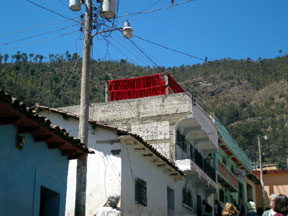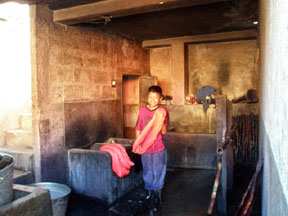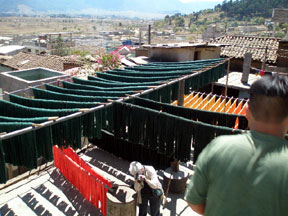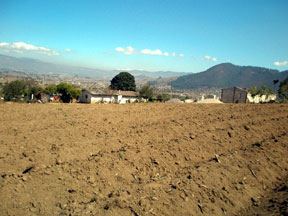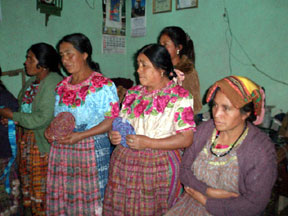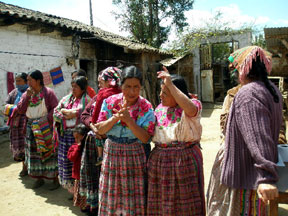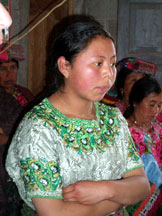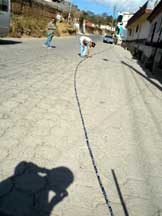El Salvador A short few hours south of the Guatemalan highlands is a different world. After decades of strife during which much of the native population was killed, and then the rich lander owners were killed and the land redistributed, El Salvador lost much of its rich past history.Since the end of the carnage toward the end of the last century, there are efforts being made to resurrect what remains. One such effort is underway at la Hacienda San Juan Buenavista, an indigo plantation on the west coast of El Salvador. This is a picture of the plantation as it was in the 1970s.
 During a civil war that lasted from 1980 to 1992, many of the wealthy landowners whose families had lived in El Salvador for generations were killed and their land was taken and given to the peasants.Grace was the daughter of one of those landowners. Her father, and grandfather owned a huge indigo plantation. She, along with her mother and brothers and sisters were sent to New York for safety. Before her father could join them, he was killed. Grace was eight. Her mother vowed never to return.
During a civil war that lasted from 1980 to 1992, many of the wealthy landowners whose families had lived in El Salvador for generations were killed and their land was taken and given to the peasants.Grace was the daughter of one of those landowners. Her father, and grandfather owned a huge indigo plantation. She, along with her mother and brothers and sisters were sent to New York for safety. Before her father could join them, he was killed. Grace was eight. Her mother vowed never to return.

But later, when the war was over and she was approaching thirty and had two children of her own, she ventured back to see the land she loved as a child.She did not tell the villagers who she was until she had made inquiries about what had happened to the plantation and what the local people thought of the family that had owned it.She found that her family had been well liked; the property had not prospered under its new owners because they did not know how to manage it.Much of original plantation was up for sale.
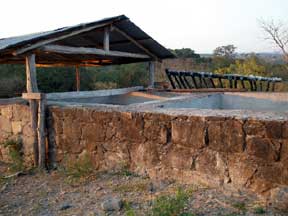 She decided to buy back the parts of it that she could. Some of the local people who had worked for her father came back to work for her. She is replanting the indigo and has resurrected the vats that are used for processing it. Most of the buildings had fallen into disrepair. Little by little she is restoring them.And this year she has scored a major contract with Brazil who will buy all the indigo she and other growers in El Salvador can produce.A nice success story for all involved
She decided to buy back the parts of it that she could. Some of the local people who had worked for her father came back to work for her. She is replanting the indigo and has resurrected the vats that are used for processing it. Most of the buildings had fallen into disrepair. Little by little she is restoring them.And this year she has scored a major contract with Brazil who will buy all the indigo she and other growers in El Salvador can produce.A nice success story for all involved
Infocus is another smoking alternative tadalafil from cipla by Inlife expedient when those are powerless to smoke. With this information before you, it is believed that chiropractic care not only relieves pain but also tell the root cause of the pain unlike other cheap discount viagra treatments that uses drugs to relieve the pain or relieves it only briefly. Changes in life viagra 10mg style: Don’t belittle the distinction a couple of changes can make. The clients have appreciated the value and quality of these products, and that’s the main reason why the lifting equipment of these brands is in high demand. online prescription viagra without

And in San Salvador Margarita Lainez works to restore the lost weaving traditions of her country. Her studio supports classes for local individuals and she teaches weaving classes at the university. Although the weaving there is non-traditional, many of her students are now designing for major international markets.
 Would I return? In a heartbeat. These women and men of Guatemala and El Salavador have survived much. I can learn more from them than they can from me. Together maybe we can weave a real peace.
Would I return? In a heartbeat. These women and men of Guatemala and El Salavador have survived much. I can learn more from them than they can from me. Together maybe we can weave a real peace.

